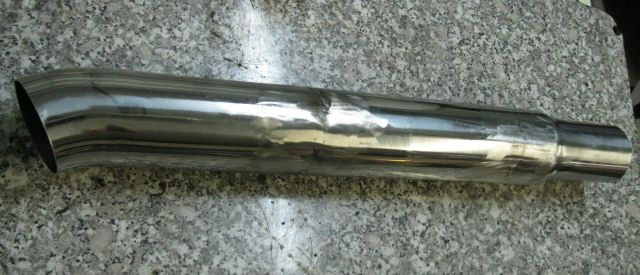The Millermatic 211 might be what you are looking for. It is dual voltage so you can run it on 110v or 220v. You can probably find a welding supply place near you that will put a package together but here are the ballpark prices from the Internet:
$1,000 Millermatic 211
$ 90 Miller Classic helmet
$ 10 Gloves
-------
$1,100
MIG Upgrade
You can use it as a wire welder with flux core wire with no additional outlay but you're going to have a lot of molten steel spatter. You'll need a tank of shielding gas to use it as a 'MIG' so that will require buying or renting a tank.
$ 180 Forty cubic foot tank for 75% Argon/25% Carbon dioxide shielding gas (good for plain steel)
$ 15 Fill the empty tank for the first time (lower price for re-fills)
$ 12 Two pound spool of .023 wire
------
$ 207
Stainless Steel Upgrade
When you decide you want to weld some stainless steel (exhaust?) you'll need another tank. Because the gas mix is different, most suppliers won't let you use the other tank.
$ 180 Forty cubic foot tank for 98% Argon/2% Carbon dioxide shielding gas (good for stainless steel)
$ 15 Fill the empty tank for the first time (lower price for re-fills). Supplier might try to sell you Tri-gas with Helium or Hydrogen but at 5 times the cost.
$ 18 Two pound spool of stainless wire
------
$ 213
Aluminum Upgrade
Once you are addicted to welding stuff, you'll want to weld some aluminum. The aluminum wire is soft so it bunches up and jams in the 10-foot long sleeve in the standard gun. You''ll need a spool gun but luckily the Miller 100 fits the Millermatic 211. And of course, you’ll need another (different) tank of shielding gas.
$ 210 Miller 100 Spool gun
$ 180 Forty cubic foot tank for 100% Argon (good for aluminum)
$ 15 Fill the empty tank for the first time (lower price for re-fills).
$ 6 One pound spool of aluminum wire
------
$ 411
Total for the Miller setup: $1,931. Figure $2K with shipping.
If you're a cheapskate hobbyist like me, you can choose a cheaper alternative. I didn't expect to be able to weld but at $89 I took a chance and bought the crappiest flux wire welder Harbor Freight sells. I managed to fab up a few things and it was easier than I expected (after I bought better quality flux core wire). None of my welding is structural -- if my welds fail, my exhaust pipes or a relay bracket may crumble. My first real welding project was a pair of pipes to connect my coated Hooker headers to the Magnaflow stainless exhaust. It's plain steel tubing and after I made sure none of my welds were leaking I sent the pipes to Jet-Hot to be coated.

I wanted to be able to weld stainless steel and aluminum as well so I bought an Eastwood 175 welder. It uses industry-standard tips, shields and supplies. It's a 220v machine that comes with a regulator and spool gun. It was on sale but I've seen it for less (free shipping). I bought the Harbor Freight helmet but Northern tool sells one for the same price and comes highly recommended.
$ 538 Eastwood 175 welder with spool gun
$ 50 Auto darkening helmet
$ 8 Gloves (2 pair)
------
$ 596
$ 195 MIG Upgrade (comes with wire)
$ 207 Stainless steel setup
$ 195 Aluminum setup (spool gun comes with wire)
------
$1,193
It's about half the price of the Miller setup so I picked up some other tools and supplies as well (welding table, clamps, etc.). I was able to fabricate a 3" stainless steel turbo downpipe for my PT Cruiser with this machine so I'm happy with it. The shielding gas makes a huge difference.
Started with Pieces:
Welded Upper Half:
Welded Lower Half:
Still have to install the two halves in the car and tack weld the final joint to be sure it all lines up.




